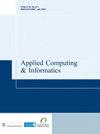基于残差初始网络的面具下人脸识别
IF 4.9
Q1 COMPUTER SCIENCE, INFORMATION SYSTEMS
引用次数: 3
摘要
目的提出一种戴口罩人脸识别的解决方案。人脸的下半部分被遮挡,不能用于人脸识别的学习过程。因此,所提出的解决方案被开发用于在任何可用的面部组件上识别人脸,这些组件可以根据戴口罩或不戴口罩而变化。设计/方法论/方法所提出的解决方案是基于FaceNet框架开发的,旨在修改现有的面部识别模型,以提高戴口罩和不戴口罩两种场景的性能。然后,在原始人脸图像的基础上计算模拟的掩蔽人脸图像,用于人脸识别的学习过程。此外,还绘制了特征热图来可视化面部图像的大部分部分,这些部分在戴口罩的情况下对识别人脸具有重要意义。结果显示,在戴口罩的人脸场景中,准确率高达99.2%。特征热图还显示,与口罩下可以遮挡的人脸下部相比,包括眼睛和鼻子在内的非遮挡成分在识别人脸方面变得更加重要。独创性/价值基于卷积神经网络的解决方案经过调整,可在戴口罩的情况下识别人脸。对原始人脸图像上的模拟掩模进行增强,以训练人脸识别模型。然后计算热图以证明从面部图像的上半部分生成的特征被正确地选择用于面部识别。本文章由计算机程序翻译,如有差异,请以英文原文为准。
Face recognition under mask-wearing based on residual inception networks
PurposeThis paper proposes a solution for recognizing human faces under mask-wearing. The lower part of human face is occluded and could not be used in the learning process of face recognition. So, the proposed solution is developed to recognize human faces on any available facial components which could be varied depending on wearing or not wearing a mask.Design/methodology/approachThe proposed solution is developed based on the FaceNet framework, aiming to modify the existing facial recognition model to improve the performance of both scenarios of mask-wearing and without mask-wearing. Then, simulated masked-face images are computed on top of the original face images, to be used in the learning process of face recognition. In addition, feature heatmaps are also drawn out to visualize majority of parts of facial images that are significant in recognizing faces under mask-wearing.FindingsThe proposed method is validated using several scenarios of experiments. The result shows an outstanding accuracy of 99.2% on a scenario of mask-wearing faces. The feature heatmaps also show that non-occluded components including eyes and nose become more significant for recognizing human faces, when compared with the lower part of human faces which could be occluded under masks.Originality/valueThe convolutional neural network based solution is tuned up for recognizing human faces under a scenario of mask-wearing. The simulated masks on original face images are augmented for training the face recognition model. The heatmaps are then computed to prove that features generated from the top half of face images are correctly chosen for the face recognition.
求助全文
通过发布文献求助,成功后即可免费获取论文全文。
去求助
来源期刊

Applied Computing and Informatics
Computer Science-Information Systems
CiteScore
12.20
自引率
0.00%
发文量
0
审稿时长
39 weeks
期刊介绍:
Applied Computing and Informatics aims to be timely in disseminating leading-edge knowledge to researchers, practitioners and academics whose interest is in the latest developments in applied computing and information systems concepts, strategies, practices, tools and technologies. In particular, the journal encourages research studies that have significant contributions to make to the continuous development and improvement of IT practices in the Kingdom of Saudi Arabia and other countries. By doing so, the journal attempts to bridge the gap between the academic and industrial community, and therefore, welcomes theoretically grounded, methodologically sound research studies that address various IT-related problems and innovations of an applied nature. The journal will serve as a forum for practitioners, researchers, managers and IT policy makers to share their knowledge and experience in the design, development, implementation, management and evaluation of various IT applications. Contributions may deal with, but are not limited to: • Internet and E-Commerce Architecture, Infrastructure, Models, Deployment Strategies and Methodologies. • E-Business and E-Government Adoption. • Mobile Commerce and their Applications. • Applied Telecommunication Networks. • Software Engineering Approaches, Methodologies, Techniques, and Tools. • Applied Data Mining and Warehousing. • Information Strategic Planning and Recourse Management. • Applied Wireless Computing. • Enterprise Resource Planning Systems. • IT Education. • Societal, Cultural, and Ethical Issues of IT. • Policy, Legal and Global Issues of IT. • Enterprise Database Technology.
 求助内容:
求助内容: 应助结果提醒方式:
应助结果提醒方式:


